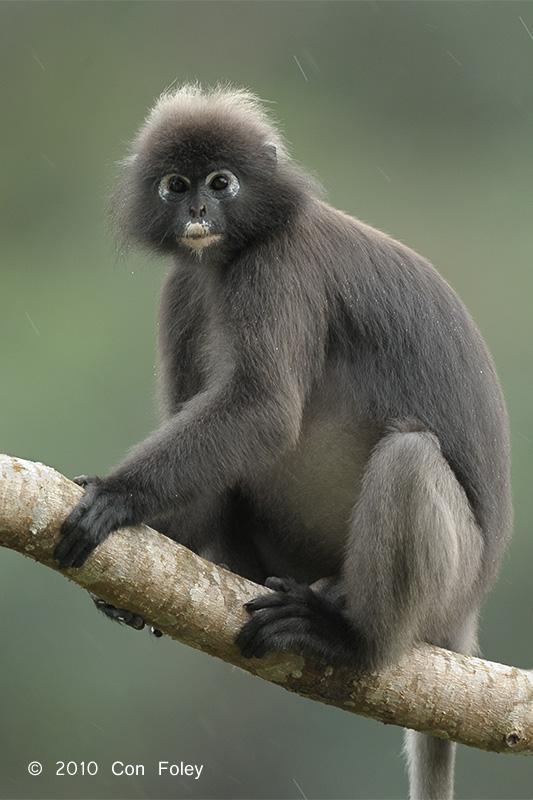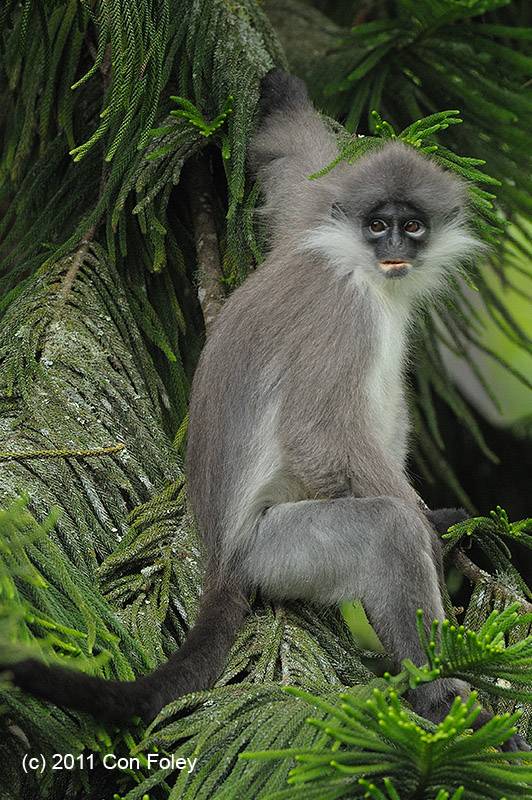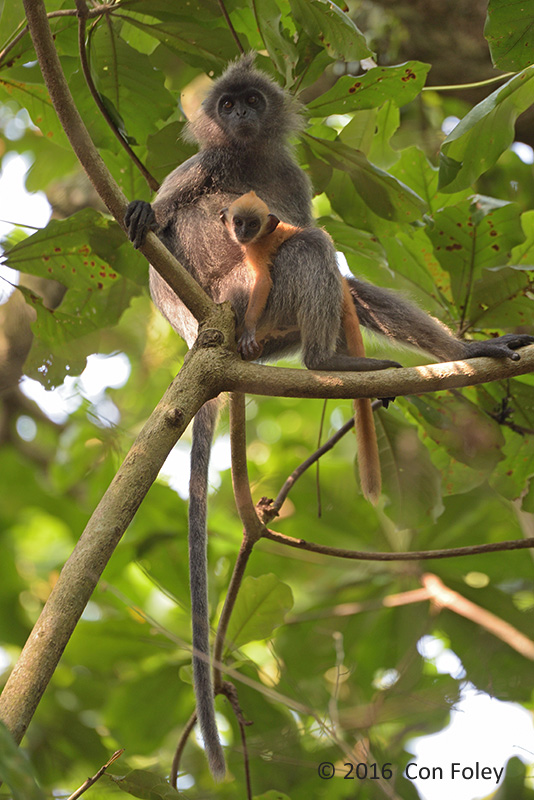There are four species of Leaf Monkeys in Peninsular Malaysia. They are all (IUCN) Near-Threatened mainly due to habitat loss especially clearance of forest for oil palm and human habitation.
Leaf Monkeys are also called Langurs and sometimes Surilis or Lutungs. But I like the name leaf monkey as it well describes one of the principal sources of food: leaves. And they all have multi-chambered stomaches to aid in digestion of this food source.
The Dusky Leaf Monkey (Trachypithecus obscurus) has the widest range of any leaf monkey throughout Peninsular Malaysia and could be encountered anywhere from the lowlands to the highlands as long as there is suitable forested habitat. It can be seen from Panti Forest Reserve in the Southern state of Johor all the way North to Langkawi Island. It is not present in Singapore. It’s range also extends further North to penisular Thailand and Burma.
It is quite common on Langkawi Island and probably more used to humans there. The photo (above) was taken in Langkawi. An alternate name is Spectacled Leaf Monkey which might be an even better name as it describes the white rings around it’s eyes.
The White-thighed Leaf Monkey (Presbytis siamensis) is present in much of Peninsular Malaysia, but not Johor and mostly not the extreme North. There are also two enclaves in Sumatra. It can also occur from the lowlands to the highlands. It is so named because the inner thighs have whitish fur.
The White-thighed Leaf Monkey is the most common leaf monkey at Fraser’s Hill and also perhaps somewhat more used to humans in this location. In Fraser’s Hill the population is the P.s. siamensis subspecies. The photo (above) was taken in Fraser’s Hill just as the monkey was about to help himself to some nice fresh papaya!
The Banded Leaf Monkey (Presbytis femoralis) has a quite fragmented range. One subspecies exists in Johor together with a very small population in Singapore, another subspecies ranges from Maxwell Hill in Perak and further North into peninsular Thailand and Burma; and a third subspecies exists in Sumatra.
The Banded Leaf Monkey is so named because it has a whitish band down it’s chest. This photo (above) was taken in Panti Forest, Johor and is the P.f. femoralis subspecies, or Raffles’ Banded Leaf Monkey. I have seen this species in Singapore, although they are few, perhaps around 40 individuals.
The Sundaic Silvered Leaf Monkey (Trachypithecus cristatus) has the narrowest range in Peninsular Malaysia, but the widest global range of the four leaf monkeys discussed here. In Peninsular Malaysia it is found only on the West Coast, typically in mangrove or riverine or swampy habitats, never far inland. It is also present throughout most of Sumatra and Borneo and nearby islands.
This was photographed in perhaps the easiest location to see this species, Kuala Selangor Nature Park. Note this is a female with a baby, the baby is orange/tan as is always the case for leaf monkey babies. As they mature they will gain adult coloration.
REFERENCE: A Field Guide to the Mammals of South-East Asia, Charles M. Francis, New Holland Publishers, 2008.





What is reference that four species of Leaf Monkeys in Peninsular Malaysia
REFERENCE: A Field Guide to the Mammals of South-East Asia, Charles M. Francis, New Holland Publishers, 2008.